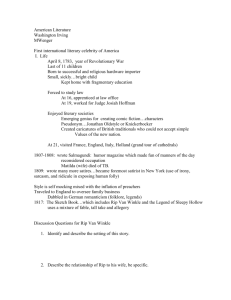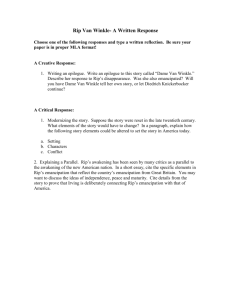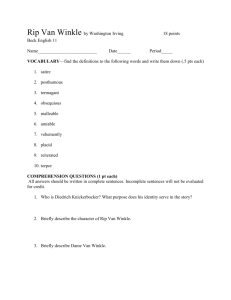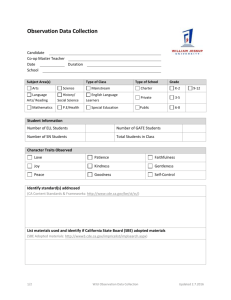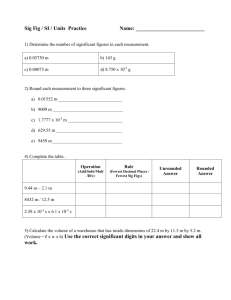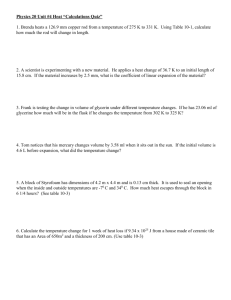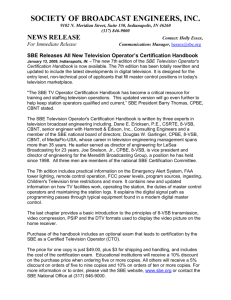II Consistent Units
advertisement
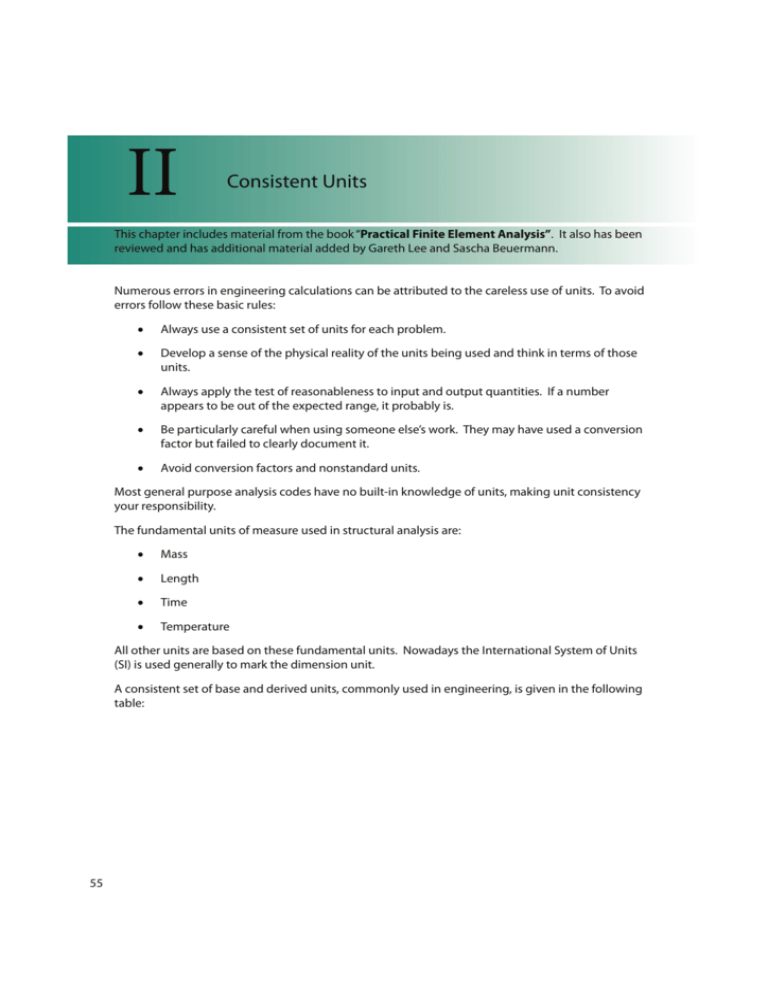
II Consistent Units This chapter includes material from the book “Practical Finite Element Analysis”. It also has been reviewed and has additional material added by Gareth Lee and Sascha Beuermann. Numerous errors in engineering calculations can be attributed to the careless use of units. To avoid errors follow these basic rules: x Always use a consistent set of units for each problem. x Develop a sense of the physical reality of the units being used and think in terms of those units. x Always apply the test of reasonableness to input and output quantities. If a number appears to be out of the expected range, it probably is. x Be particularly careful when using someone else’s work. They may have used a conversion factor but failed to clearly document it. x Avoid conversion factors and nonstandard units. Most general purpose analysis codes have no built-in knowledge of units, making unit consistency your responsibility. The fundamental units of measure used in structural analysis are: x Mass x Length x Time x Temperature All other units are based on these fundamental units. Nowadays the International System of Units (SI) is used generally to mark the dimension unit. A consistent set of base and derived units, commonly used in engineering, is given in the following table: 55 Quantity Symbol Dimension SI-System (MKS) System mm-t-s Unit Mult. Length l L m mm 103 mm Mass m M kg t (tonne) 10-3 kg 1 Time t T s s 1 ms 103 Temperature T degrees K K 1 K 1 Work, Energy W, E ML2T-2 +/N8tT mJ 103 J 1 Acceleration a LT-2 NtT-2 NNtT-2 103 NNtNT-2 10-3 Area A L2 m2 mm2 106 mm2 106 Frequency f T-1 Hz=s-1 Hz=s-1 1 ms-1 10-3 Velocity v LT-1 NtT-2 mm*s-1 103 NNtNT-1 Volume V L3 m3 mm3 109 mm3 Angular Acceleration D T-2 SBEtT-2=s-2 SBEtT-2=s-2 1 SBEtNT-2=ms-2 10-6 Angular Velocity Z T-1 SBEtT-1=s-1 SBEtT-1=s-1 1 SBEtNT-1=ms-1 10-3 Density U ML-3 LHtN-3 UtNN-3 Pressure, Stress, Young’s Modulus pV WE ML-1T-2 1B/tN-2 .1B/tNN-2 10-6 (1BL/tNN2 10-9 Force F MLT-2 /LHtNtT-2 N kN Moment M ML2T-2 /tN /tNN3 L/tNN Stiffness c MT-2 /tN-1 /tNN-1 L/tNN-1 10-12 1 10-3 System mm-kg-ms Unit Mult. 103 LHtNN3 1 109 10-9 10-3 10-6 The given conversion multipliers (Mult.) are valid for conversion from the SI-System to the given system. Equations Used to Help Determine Consistent Units To test whether a set of units is consistent is to check basic equations. For example, for a force, F = m tBNtMU?BOEUIFSFGPSFUIFEFöOJUJPOPGB/FXUPOJT/LHtNT? Please see chapter IX Material and Property Information for examples of sets of consistent units. Be aware that most codes use angular measures in degrees in some input and output. For instance, RADIOSS uses degrees when inputting in cylindrical or spherical coordinate systems but outputs displacement angles in radians. Refer to the appropriate users manual to determine which measure 56 to use for angles. Physical constants are also closely related to unit systems. Be certain that the constants you look up or “inherit” from others are in the same consistent unit set that you have chosen. Do not blindly accept constants passed on to you from another person. It is best to look up constant values in a recognized source and reference the source in your documentation. Complex analytical projects involve a great number of details each of which must be correct in order to obtain an acceptable solution. Seek assistance if you do not feel comfortable with the magnitude of detail checking required or if you are not confident about your intuition regarding the “typical” answers that your type of problem should produce. To increase your skills and confidence, solve a scaled down version of the problem you are working on or, solve problems that have a handbook or closed form solution. Consistent Unit Summary 57 1. Use a consistent set of units which you fully understand. 2. Know your sources of physical constants. 3. Be careful with decimal points. 4. Study problems with known answers to gain confidence. 5. Solve scaled down versions of the larger problems you are working on.


